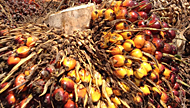World’s first map of the distribution of global grassland ecosystems

An IKI project is preparing the first map of the geographical distribution of 49 different types of grassland around the world. This will serve as a fundamental basis for their conservation.
Grasslands are essential ecosystems that have a number of functions, for example as pastureland, a home for a wide variety of plant and animal species and as stores of carbon. An International Climate Initiative (IKI) project is now preparing the first map of the geographical distribution of different types of grassland that comprise approximately 75 per cent of all grasslands worldwide. It connects information from the International Vegetation Classification (IVC) with the Terrestrial Ecoregions of the World (TEOW) map. This is coupled with the establishment of a global definition for natural and semi-natural grassland.
Since 2010, the German Federal Environment Ministry (BMUB) has been funding the "Land-use Planning and Sustainable Biomass Production for Climate Protection" project in Brazil, Colombia and Indonesia. The project is being implemented by WWF and is developing new methods to help ensure that land use is in line with climate, social and environmental criteria, while taking into consideration the stipulations in the EU Renewable Energy Directive (EU RED) for the sustainable production of liquid biomass and biofuels. Among other things, the project identifies ecologically valuable areas as well as ecosystems of relevance to climate change mitigation, such as large contiguous forests or areas hosting a high level of biological diversity, and displays these cartographically.
The new global grasslands map aims to promote strategies for conserving grassland ecosystems and serve as a decision-making basis for politicians and landowners. The map helps them appraise areas of land more easily and, for example, make decisions about their conservation or conversion into plantations. As part of EU RED, which includes the protection of grasslands with high biological diversity, it also provides a fundamental basis for regulating imports of raw materials for biofuels in the EU. The map can also be used to monitor changes in the worldwide expansion and biological diversity of grassland ecosystems, and to facilitate better visibility of their conversion into arable land.
The link has been copied to the clipboard
Contact
IKI Office
Zukunft – Umwelt – Gesellschaft (ZUG) gGmbH
Stresemannstraße 69-71
10963 Berlin





